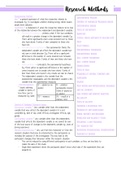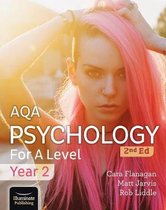Summary
Summary AQA A-Level Psychology Research Methods Notes
- Course
- Institution
- Book
These are detailed notes for the Research Methods Topic of AQA A-Level Psychology. This covers both Year 1 and Year 2 Research Methods. I wrote them using class notes, revision guides and textbooks. I will also be uploading the other topics and creating bundles. Topics Included: - Experimental ...
[Show more]




